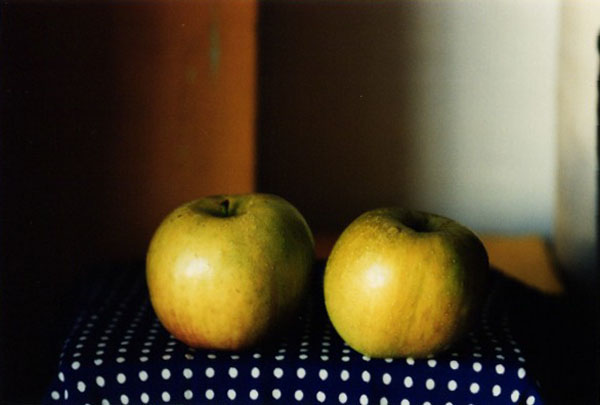OLD GROWTH FOREST RAG
Stephen Lyons




photo by Hal Lum
The fallers came from timber
towns where times were tough
and the mills had closed.
They survived, that's all,
season to season
paycheck to paycheck
while their wives held service
jobs in mid-sized cities
at lower elevations. They drove
mud-splattered green
power wagons busted tail
gates held together
with clamp and wire, beat-up
cracked window crummies
weighed down to the axle
with chain saws
of various lengths
steel bars mauls axes
files wedges shovels
red greasy rags leaky
cans of gasoline and oil
broken bottles crushed beer cans
Mickey's Big Mouth Henry's
Tap the Rockies Coors Light
This Bud's for you.
They had driven three hours
one hundred and twenty
miles through the new frontier
of karaoke bars and mini-marts
roadside ATMs, video stores outlet malls
24-hour bingo game reservation casinos
and combination smokeshops
dream big scratch and win, Idaho lottery,
past employment retraining centers
the place for the latest minimum wage
opportunities, four seventy-five an hour
but soon five fifteen, in south Texas
certain parts of Georgia when it isn't raining
and you can learn to love the rain.
They drove all this way over switchback
washout washboard rattled roads
to cut the last
old growth tree
in North America.
Douglas-fir. Also called
Douglas-spruce. Oregon pine.
Two hundred feet tall. Evergreen needles,
pointed, not notched. Reddish-brown bark
color of poison oak
Egg-shaped mousetail cones
long-winged seeds.
Douglas-fir.
Reservoir of carbon.
Fog catcher. Rain distiller.
Fibrous sponge for Pacific curents.
Deep root filtration system to offset erosion.
Douglas-fir.
Nest for flying squirrel.
Food for grouse, deer, elk.
Territorial scratching pad for bear
on tiptoes.
Climbing pole for porcupine.
Bird feeder for steller blue jay.
Roosting tree for northern pygmy owl
Hiding place for western red-backed vole.
Douglas-fir.
First in total volume of havested timber.
First in production of plywood veneer.
Jobs for three hundred families
supported by timber dollars.
The men who came to cut
the last tree worked through
the morning fog cork boots soaked
still two feet from the core
at noon when they stopped for lunch.
They ate out-of-season venison
sandwiches, hardboiled eggs,
huckleberry pie triangles, drank black coffee
from green dented thermoses. They discussed
memorable logging accidents, widow-makers
of spectacular dismemberment. They spent
imaginary lottery winnings on wives
children, in-laws, former and current girlfriends,
They lamented the demise of professional sports,
especially baseball, solved foreign policy problems
cut off aid to Poland and the National Endowment to the Arts,
speculated about Whitewater and campaign contributions
but knew for sure who runs the show.
And they talked about running out.
Good trees with true grain,
how the best days were behind them: Kelly Creek
Cove Mallard, Vancouver Island, Kalmiopsis.
How soon they would have to chase the wood, north
and west across the Pacific
all the way to Siberia.
At first it had seemed endless
a dark green sea
grove, island after island
thick forests of bough and rafter.
At first in twilight shadows
we stood together and named the beauty
by naming the trees.
At first light barely touched
damp humus
and even as we cut them down
to build this world,
a reverence, an awe
a faith in the not knowing.
Past the core now, inside the wet heart
of a hundred tree rings woodchips
spraying across strong forearms
pooling in blonde mounds
Saws at full throttle echoing
across the valley. Fog lifting.
In the distance stooped tree planters
balanced at 45-degrees replanting
nursery seedlings.
Hemlock, hemlock, hemlock.
Slash piles smoldering
next ridge over. Bulldozers
clearing this century's moss,
five-finger ferns spotted salamaders
salmon berry wild ginger king snake rubber boa.
An osprey circled the men,
took one good look
flew off toward the harbor
clogged with freighters the size of stadiums
filled with cargoes of raw logs bound and gagged
for China, Taiwan, Korea, Singapore, Japan
exchanged for the global economy
of VCRs, mountain bikes plastic
big wheels Nordstroms beverage holders Nissans
noodles milled dimensional lumber
Disney merchandise synthetic American
flags some with only 49 stars
Nike sweatshop gear.
How much is enough?
The oldest logger broke
through first. He killed his saw, ran
with the others
shouted, Shit!
splinters snapped
stabbed his cloud of breath.
The tree kicked out four feet
would of killed him a second earlier
fell where it was supposed to fall.
Shook the ground with a force
the men were never used to
roots tearing through earth
surfacing cool moist soil
temperature of shade.
There is no other sound like it
when the last tree falls.
Long before this, in the forest, we stood together to name the beauty.
Red alder.
Bishop pine.
Grand fir.
Big leaf maple.
Wavyleaf silk-tassel.
California black oak.
Giant sequoia.
Red berry juniper.
Peach leaf willow.
Sitka spruce.
Port Orford Cedar.
Humboldt redwood.
Arizona sycamore.
Phillipine mahogany.
Pacific dogwood.
Canyon live oak.
Caledonia pine.
Sweet acacia.
Brazilian rosewood.
Florida cypress.
Klamath plum.
Douglas-fir.
Also called Douglas-spruce. Oregon pine.
Two hundred feet tall.
Seven men holding hands
could not close a circle
around corky bark.
Wind catcher. Fog
distiller. Deep root
filtration system
to offset erosion.
Fibrous sponge
for Pacific current.
Reservoir of carbon.
Douglas-fir.
First in total volume
of harvested timber.
First in commercial board feet.
Ten thousand dollars per tree.
Jobs for three hundred families
supported by timber dollars
for two more years.
contents